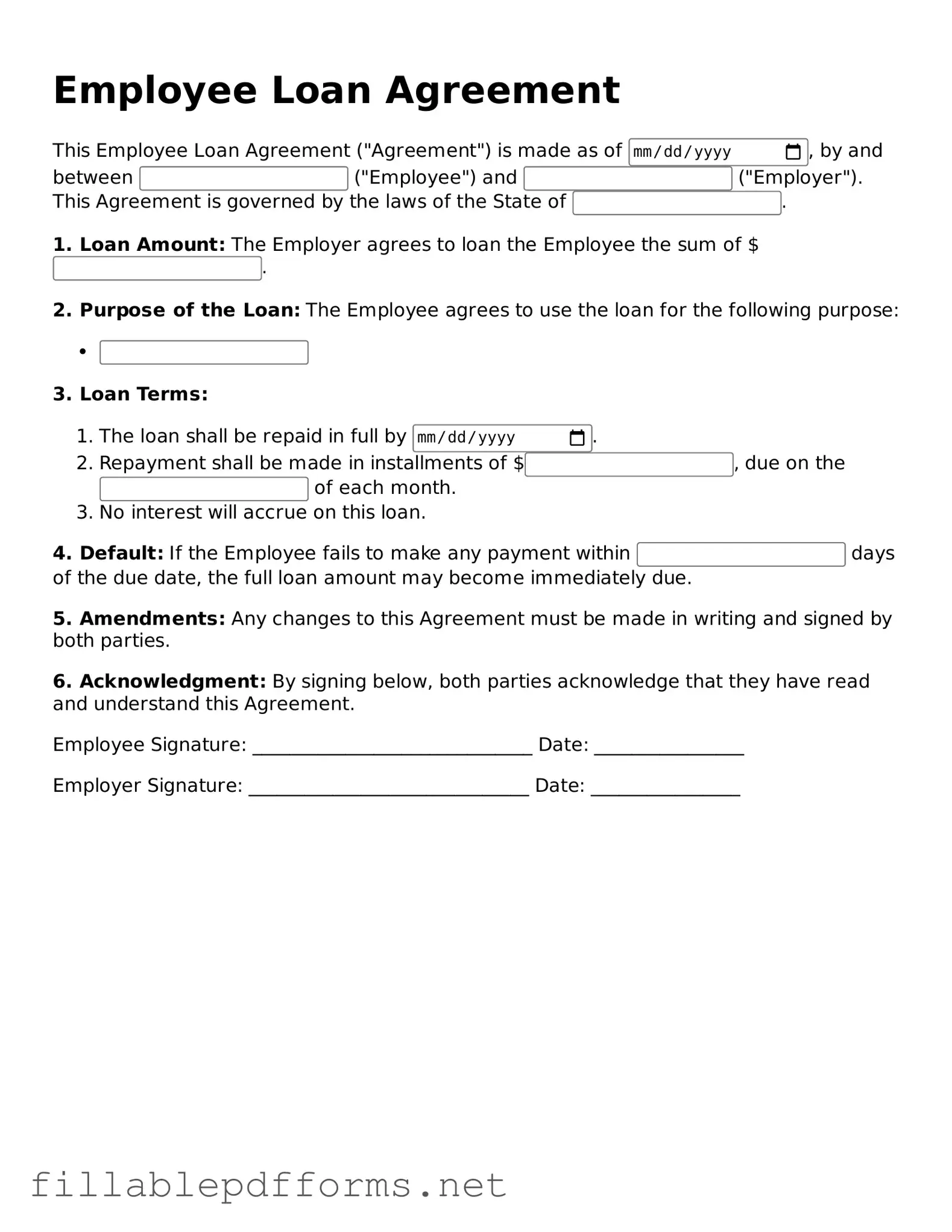When employees find themselves in need of financial assistance, an Employee Loan Agreement can provide a structured solution that benefits both the employee and the employer. This form outlines the terms under which an employer agrees to lend money to an employee, detailing the loan amount, repayment schedule, and any applicable interest rates. It also specifies the conditions under which the loan must be repaid, including potential consequences for late payments or defaults. By clearly defining the expectations and responsibilities of both parties, the agreement helps to prevent misunderstandings and fosters a sense of trust. Additionally, it often includes provisions for confidentiality and dispute resolution, ensuring that both the employer's and employee's rights are protected. Understanding these key components is essential for anyone considering entering into such an agreement, as it lays the groundwork for a transparent and fair lending process.
